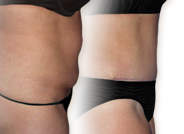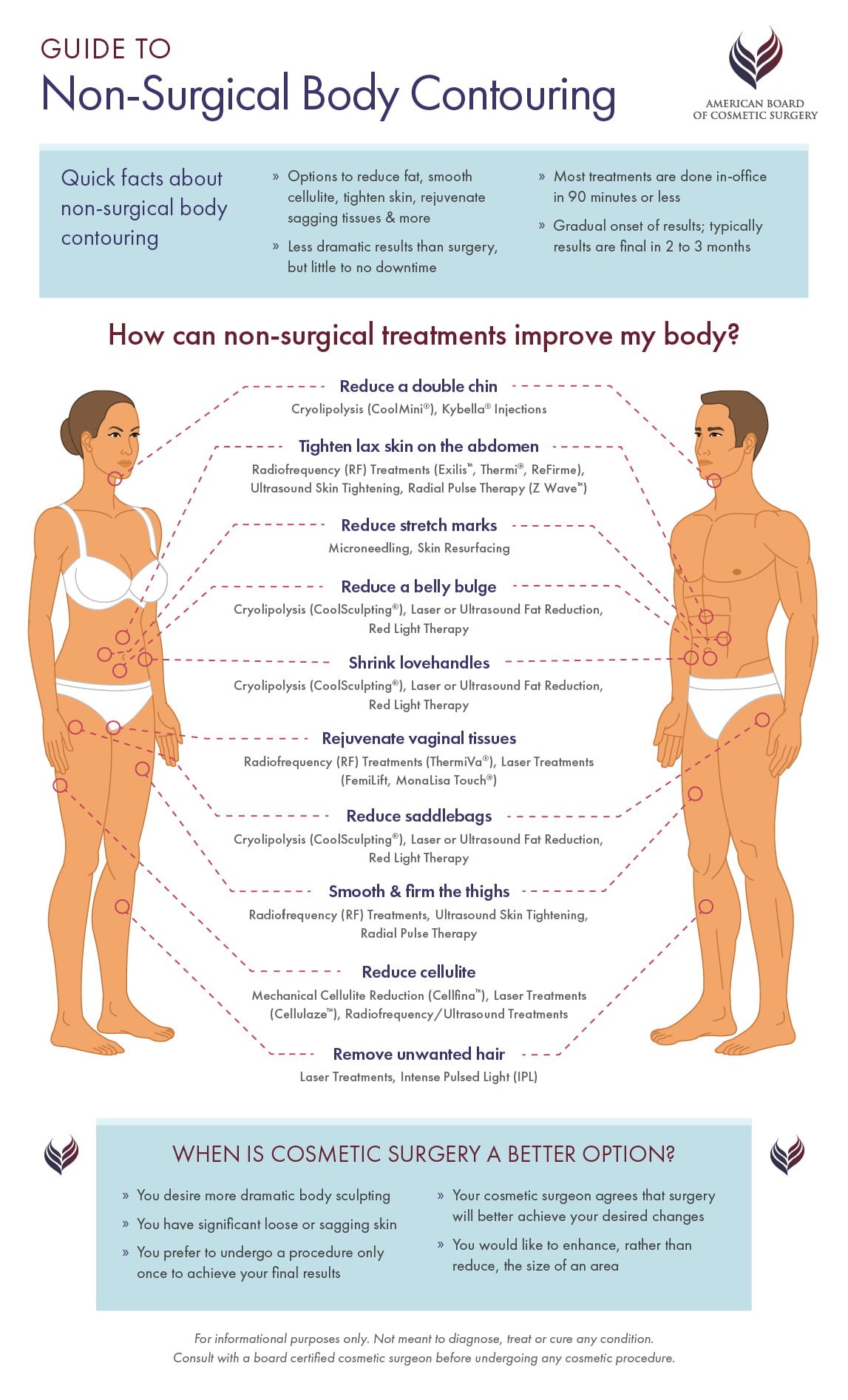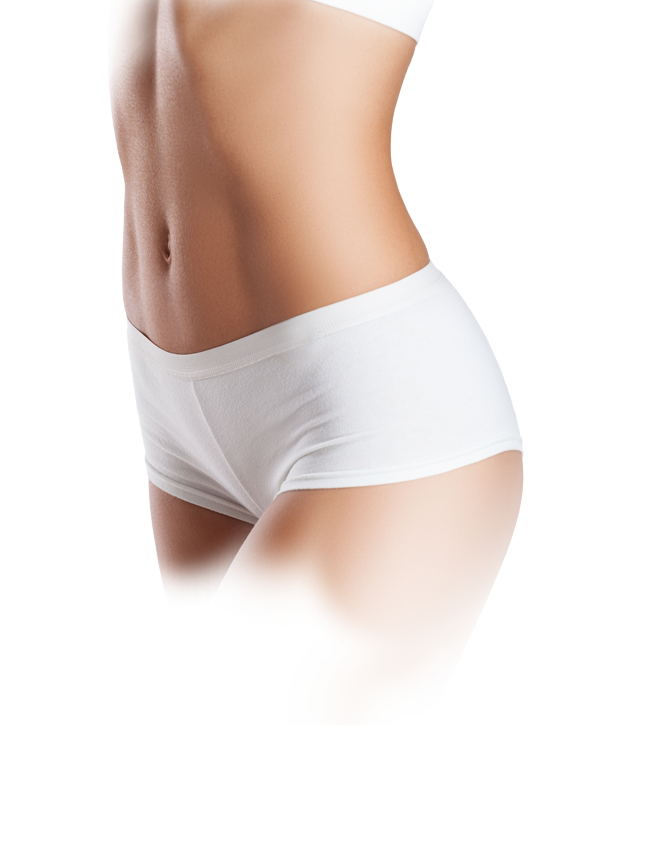Guide to non-surgical fat reduction
Non-surgical fat reduction includes minimally invasive treatments that selectively break down fat cells in specific areas to reduce the size of subcutaneous fat pockets (fat deposits that sit beneath the skin, but above the muscle). A number of FDA cleared treatments are available, each achieving gradual, modest fat loss without surgery or downtime. Choose from the options below, or read our entire guide to learn more:
- Is non-surgical fat reduction a good option for me?
- What treatments are available?
- Choosing a provider
Is non-surgical fat reduction a good option for me?
For patients at or near their ideal body weight who do not need significant reshaping in an area, non-surgical treatments can be a great option to reduce isolated pockets of diet and exercise resistant fat without surgery, and with little to no downtime. However, it is important to have realistic expectations about what results a non-surgical treatment can achieve.
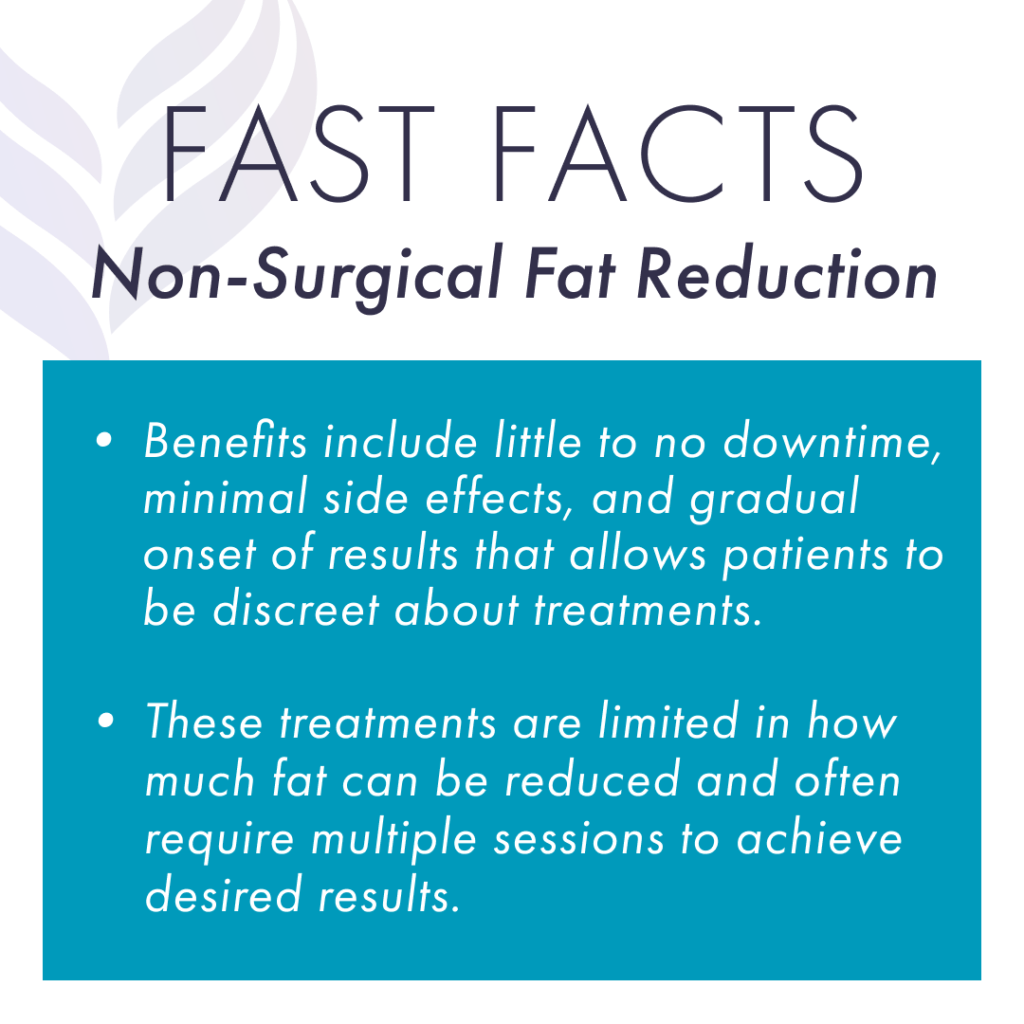
- Key Benefits
- Glossary
- Reduces fat: Non-surgical fat reduction procedures, such as CoolSculpting and SculpSure, can reduce the appearance of stubborn fat pockets that are resistant to diet and exercise.
- Enhances body contour: By reducing fat, non-surgical fat reduction procedures can also enhance the overall contour and shape of the body, creating a more toned and streamlined appearance.
- No surgery or downtime required: Unlike traditional liposuction, non-surgical fat reduction procedures do not require surgery or general anesthesia, making them a more convenient and less invasive option for many patients.
- Cryolipolysis: A non-invasive fat reduction technique that uses controlled cooling to freeze and eliminate fat cells.
- Fat freezing: A non-invasive procedure that uses controlled cooling to freeze and destroy fat cells, also known as cryolipolysis.
- Necrosis: The death of cells or tissue, often associated with a lack of blood supply or trauma.
- Lipolysis: The breakdown or destruction of fat cells.
- Subcutaneous fat: The layer of fat located just beneath the skin.
- FDA cleared: Indicates that a moderate-risk medical device has been determined by the U.S. Food and Drug Administration to be safe and effective for its intended use based on substantial equivalence to a predicate device.
- FDA approved: Indicates that a high-risk medical product (i.e. a drug or implantable device, including dermal filler) has undergone pre-market review and approval by the U.S. Food and Drug Administration for specific uses based on valid scientific evidence of safety and efficacy.
- Non-invasive: Referring to a procedure or treatment that does not require surgical incisions or penetration of the skin.
- Minimally-invasive: Describes a surgical procedure that uses minimal incisions to achieve the desired result, leading to less recovery time.
- Radiofrequency (RF): A technology that uses electromagnetic waves to generate heat, often used for skin tightening and body contouring due to its ability to stimulate collagen production.
- Ultrasound waves: High-frequency sound waves often used in medical imaging and therapies to visualize and/or target tissues beneath the skin.
- Body sculpting: The process of shaping and contouring the body through various techniques, such as fat reduction, muscle toning, and skin tightening.
- Body contouring: Procedures or treatments aimed at improving the shape and contours of the body, often involving fat reduction, skin tightening, or muscle toning.
- Cellulite: Dimpled or lumpy appearance of the skin, particularly on the thighs and buttocks, caused by the underlying structure of fat deposits and connective tissue.
Benefits of non-surgical fat reduction
- Little to no downtime is required
- No general anesthesia, incisions or scars
- Side effects are minimal for most patients
- Gradual onset of results allows patients to be discreet about treatments
- Results can last as long as a patient maintains his or her weight
Limitations
- Reduces fat only (minimal sculpting ability compared to liposuction)
- We cannot choose exactly how much fat is lost, only estimate a percentage
- Multiple treatments may be needed to achieve desired results
- May not be suitable for patients with significant amounts of fat to lose
No cosmetic procedure, surgical or non-surgical, is intended for weight loss. Treatments will not significantly change a patient’s weight, and a healthy lifestyle and weight maintenance are essential to maintain results.
Non-Surgical Body Contouring: a Guide to Your Options
Non-surgical body contouring includes much more than fat reduction. Today, you have options to smooth cellulite, tighten skin, rejuvenate vaginal tissues, and remove unwanted hair. The guide below outlines your many options.
The best way to learn whether non-surgical fat reduction is suitable for your goals is to consult with an experienced cosmetic surgeon who is certified by the American Board of Cosmetic Surgery. An ABCS diplomate will be appropriately trained in both surgical and non-surgical techniques and can help you choose the right treatment option for your needs.
Non-surgical fat reduction treatments & technologies
Outlined below are FDA cleared treatments that are generally available across the U.S.
Cryolipolysis (CoolSculpting®)
Cryolipolysis is a noninvasive technology that uses extreme cold to dismantle fat cells and help reduce a fat pocket. A paneled or cupped device is placed on top of the skin in the treatment area, where it transmits temperatures that are just low enough to freeze fat cells, essentially destroying them. Because skin, muscle and nerve tissue freeze at a lower temperature than fat, these tissues remain unharmed. CoolSculpting is the brand name of cryolipolysis.
Fast facts about CoolSculpting
- FDA cleared for abdomen, hips, inner or outer thighs, back (“bra rolls”), upper arms, under the buttock, and under the chin
- Best for patients who wish to reduce the size of a fat bulge with little reshaping
- Studies show that up to 25% fat reduction per treatment is typical
- Treatments take 35 to 60 minutes to perform; any discomfort is typically mild and includes an intense cold feeling
- Common side effects include temporary, mild swelling, numbness, redness and tingling. Serious or lasting side effects are extremely rare
- Typical patient is satisfied after 1 to 2 treatments
- Results are noticeable within 1 month and final after 2-3 months
- Results last barring significant weight gain
Laser Treatment (SculpSure®)
Laser fat reduction works by dismantling subcutaneous fat using controlled heat. A specific laser wavelength is delivered through the skin, heating fatty tissues to the point where fat cells begin to break down. A constant cooling mechanism ensures that skin is not damaged in the process. SculpSure is the brand name of this non-invasive laser technology.
Fast facts about SculpSure
- FDA cleared for abdomen and flanks. Can be used on other areas.
- Treatment is typically painless; patients feel a warming sensation
- Treatment takes 25 minutes per area
- Results are noticeable in ~6 weeks and final in ~12 weeks
- Results should last barring significant weight gain
Injectable Deoxycholic Acid (Kybella®)
Deoxycholic acid is a naturally occurring substance in the body that helps break down fat for digestion. In injectable form, deoxycholic acid can break down fat cells on contact for isolated reduction of a fat pocket. Currently, Kybella (formerly called ATX-101) is the only FDA approved form of injectable deoxycholic acid, and can be used to effectively reduce a double chin.
Fast facts about Kybella
- FDA approved for reducing submental fullness (fat beneath the chin).
- Treatment involves multiple injections underneath the chin, using a very thin needle
- Injections take about 20 minutes to perform; local anesthetic may be used to enhance comfort
- Little to no downtime is required; most patients return to full activity within 2 days
- The typical patient requires 2 to 4 treatments, spaced 1 month apart, for optimal results
- Common side effects include temporary, mild swelling, numbness, redness, and bruising at the treatment side. Serious side effects, such as facial weakness or prolonged numbness, are rare and usually resolve on their own
- Fat cells destroyed with Kybella do not return, and results should last barring significant weight gain
Ultrasound Fat Reduction
Ultrasound fat reduction uses highly focused sonic waves to break down fat cell walls in the treatment area, thereby releasing the fat inside to be metabolized by the body and reducing the size of a fat deposit. The ultrasound energy transmits through the skin, creating rapid pressure changes that cause the fat cells to break down while leaving surrounding tissues unharmed. FDA cleared ultrasound fat reduction treatments include UltraShape, which uses a pulsed ultrasound technology, and Liposonix, which uses a high intensity focused ultrasound.
Fast facts about ultrasound fat reduction
- Treatments are intended for use on the abdomen and flanks
- Ultrasound is noninvasive and no downtime is needed
- Typical patient requires 1 to 3 treatments spaced 2 weeks apart, depending on treatment
- Results appear gradually and are typically final within 6 to 12 weeks
- Destroyed fat cells do not grow back; results can last with weight maintenance
Red Light Therapy (UltraSlim)
One of the newest technologies to be FDA cleared for non-surgical fat reduction uses red light therapy to reduce the volume of subcutaneous fat cells. Instead of removing or destroying fat cells, photonic lypolysis, or “red light therapy,” delivers specific wavelengths of light through the skin using a specialized lamp. This light triggers selected fat cells to create small openings and release some of their contents, thus helping them shrink in size. FDA cleared treatments that use photonic lipolysis/red light therapy include UltraSlim.
Fast facts about red light therapy fat reduction
- Red light therapy is intended to treat the abdomen, hips, or thighs; your cosmetic surgeon may use it for additional areas
- Treatment is noninvasive and no downtime is needed
- Treatments take about 30 minute to perform
- Results begin to appear within a few hours after treatment and continue to improve as the body metabolizes the fat
- Fat released by treatment is naturally eliminated as waste
- Patients typically choose to have 3 or more treatments to achieve their goals
- Results can last as long as a patient maintains a healthy lifestyle and stable weight
- Red light therapy is a very low-risk treatment with no determined side effects; however, patients who are pregnant or have reduced liver function should not undergo treatment
Choosing a Provider for Non-Surgical Fat Reduction
Because non-surgical fat reduction treatments vary widely in mechanism, they may be performed by a medical aesthetician, registered nurse, or cosmetic surgeon. In general, completely non-invasive treatments (such as CoolSculpting or SculpSure) can be safely performed by a licensed, trained aesthetician working under physician supervision. Injectable fat reduction treatments, such as Kybella, require an advanced knowledge of anatomy and should be performed only by a qualified cosmetic surgeon or provider with equivalent training and experience.
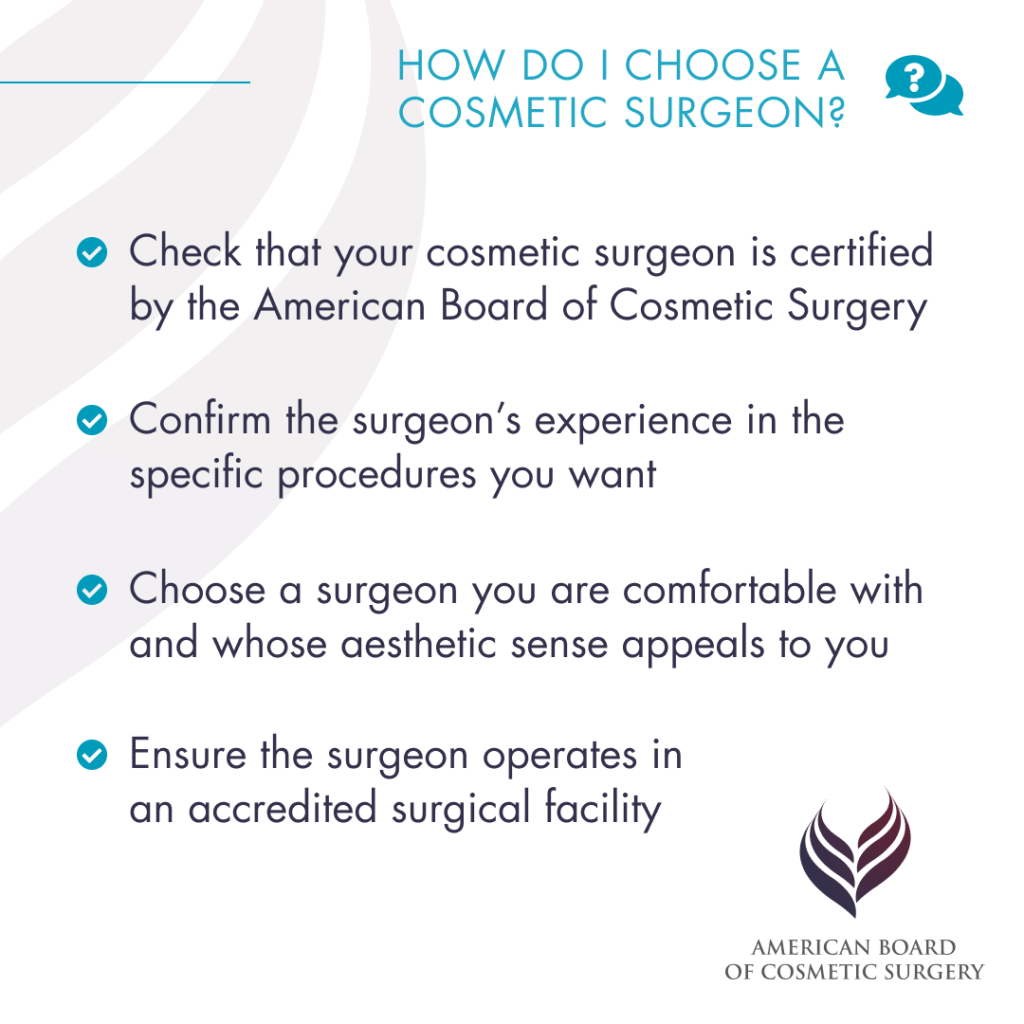
FIND AN ABCS COSMETIC SURGEON NEAR YOU »
The best place to start? Find an ABCS diplomate cosmetic surgeon near you, and schedule a consultation to discuss your needs and goals, review your treatment options, and learn what results you might expect with non-surgical fat reduction.
References »
Adjadj L, SidAhmed-Mezi M, Mondoloni M, Meningaud JP, Hersant B. Assessment of the Efficacy of Cryolipolysis on Saddlebags: A Prospective Study of 53 Patients. Plastic and Reconstructive Surgery. 2017. doi: 10.1097/PRS.0000000000003433
Bass LS, Kaminer MS. Insights Into the Pathophysiology of Cellulite: A Review. Dermatologic Surgery. 2020. doi: 10.1097/DSS.0000000000002388
Bernstein EF, Bloom JD. Safety and Efficacy of Bilateral Submental Cryolipolysis With Quantified 3-Dimensional Imaging of Fat Reduction and Skin Tightening. JAMA Facial Plastic Surgery. 2017.
Kiedrowicz M, Duchnik E, Wesołowska J, Bania B, Peregud-Pogorzelska M, Maciejewska-Markiewicz D, Stachowska E, Kruk J, Marchlewicz M. Early and Long-Term Effects of Abdominal Fat Reduction Using Ultrasound and Radiofrequency Treatments. Nutrients. Nutrients. 2022. doi: 10.3390/nu14173498
Krueger N, Mai SV, Luebberding S, Sadick NS. Cryolipolysis for noninvasive body contouring: clinical efficacy and patient satisfaction. Clinical, Cosmetic and Investigational Dermatology. 2014. doi: 10.2147/CCID.S44371
Liu M, Chesnut C, Lask G. Overview of Kybella (Deoxycholic Acid Injection) as a Fat Resorption Product for Submental Fat. Facial Plastic Surgery. 2019. doi: 10.1055/s-0039-1688943
